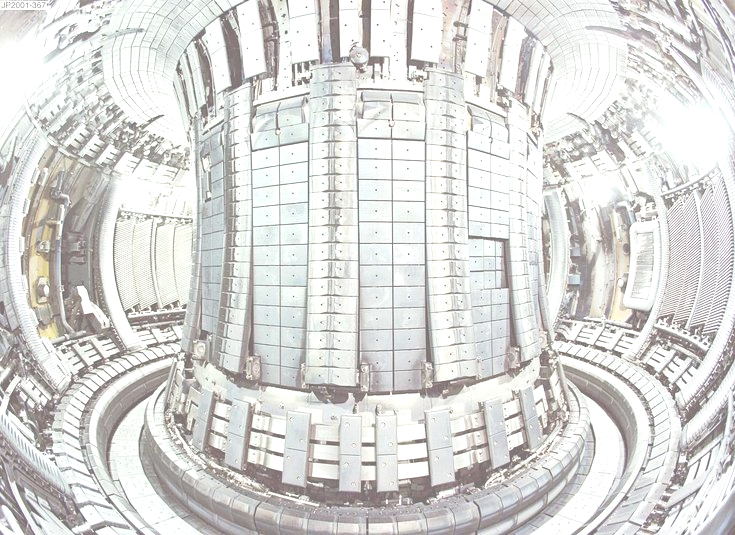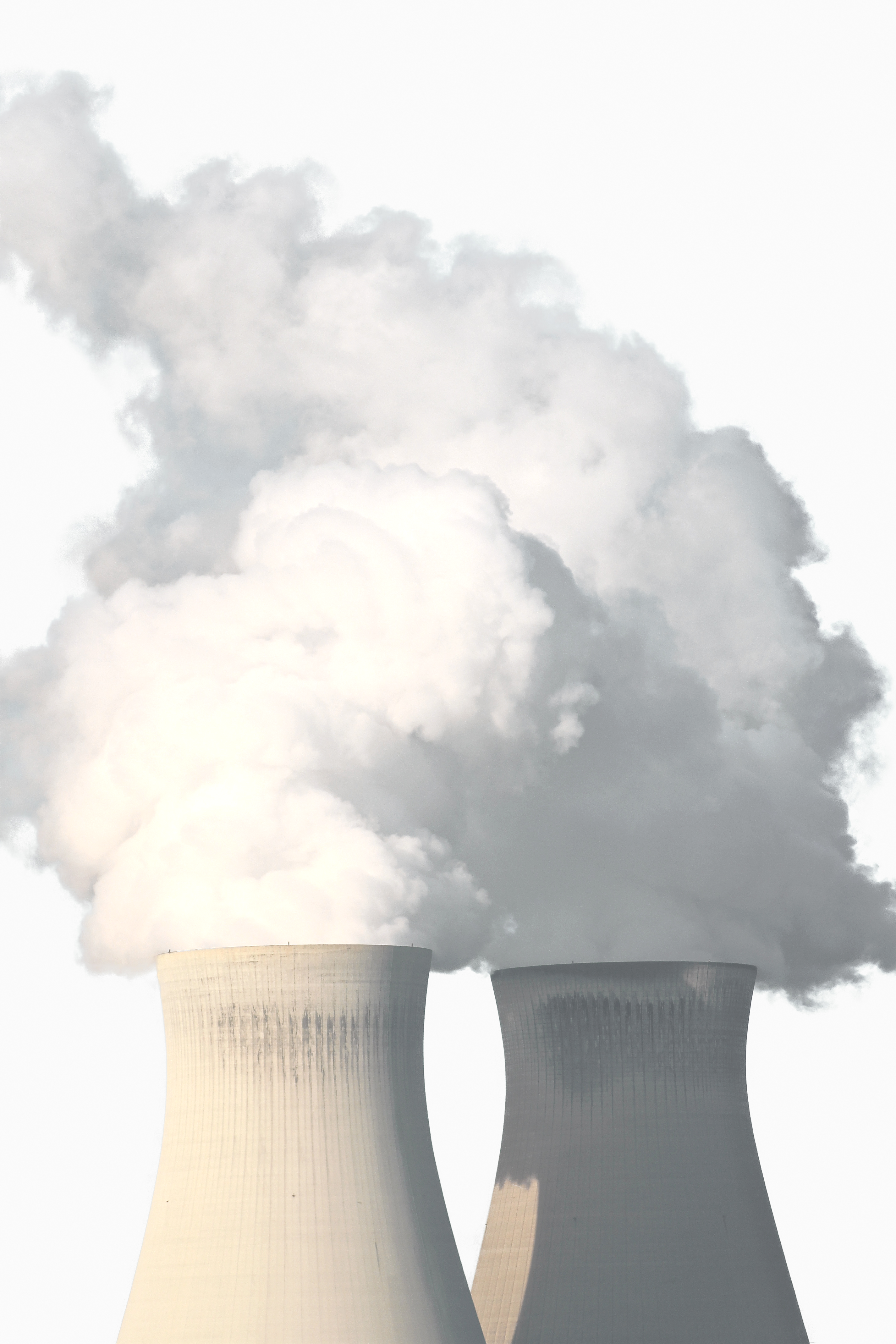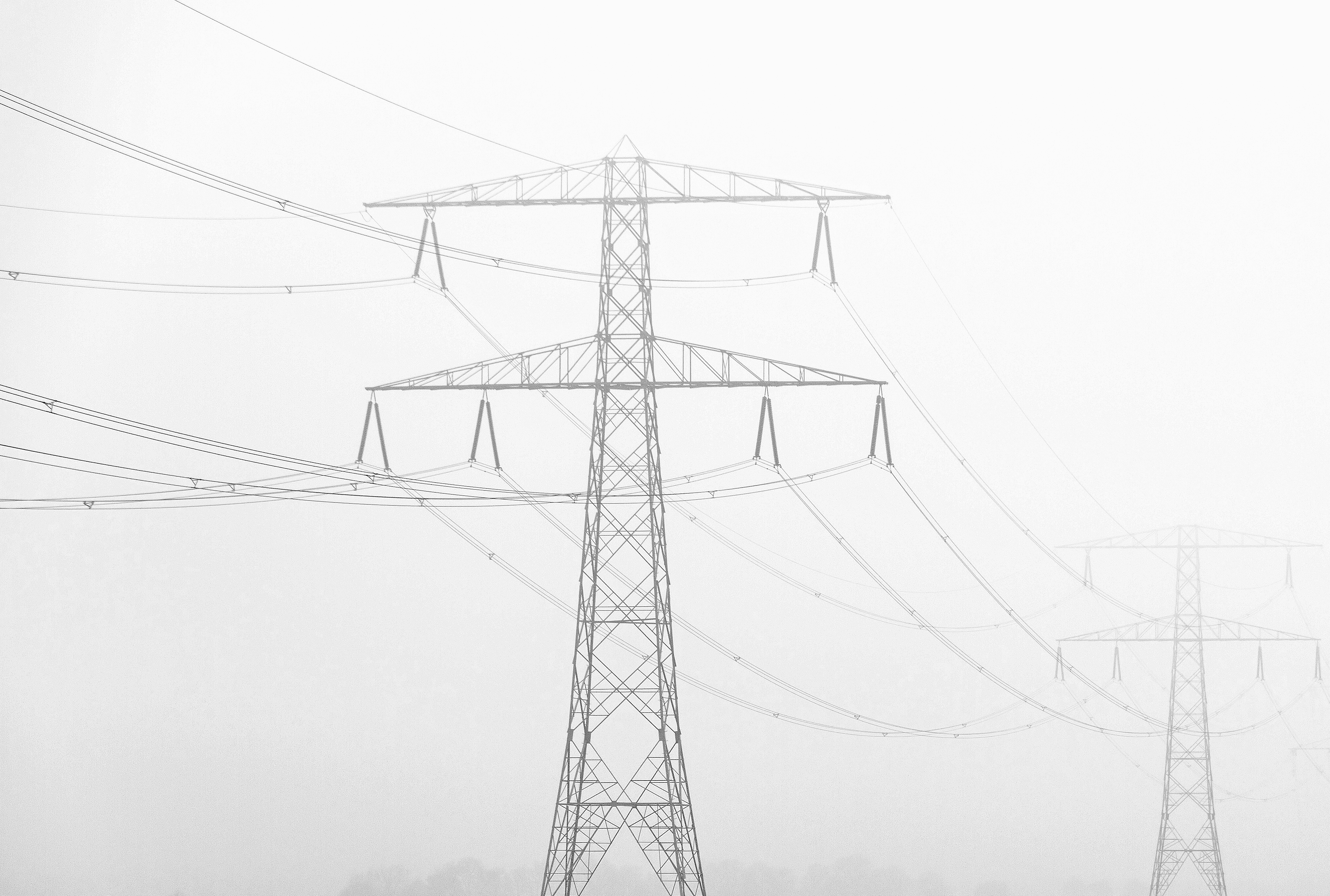stories on progressResearchers achieve fusion energy record
July 1, 2022

image | above
In this photo you can see the doughnut shaped interior of the nuclear fusion reactor at the JET Fusion test lab.
— contents —
~ story
~ featurette
~ quotes
~ watching
~ reading
— story —
Researchers have exceeded the current record for generating energy from a nuclear fusion reaction. It’s a big step toward solving the world power consumption crisis. Nuclear fusion is called the holy grail of energy production — because it could lead to a virtually unlimited source of safe + sustainable power.
The nuclear test happened at the world’s most powerful fusion plant — the JET Fusion facility in the UK. The record-breaking nuclear fusion reaction had a temperature of more than 150 million degrees Celsius, 10 times hotter than the heart of the sun. The research team explained that the breakthrough is a landmark for this technology, and a key step toward developing practical nuclear fusion.
The difference between fusion + fission.
Most nuclear reactors use fission — that’s when big unstable atoms like uranium are split in two, releasing lots of energy + radiation. Fission is the current technique used around the globe in nuclear power plants. But fusion is different. It involves forcing atoms of hydrogen together — fusing them to create: helium, lots of energy, and just a tiny bit of short-lived radiation.
Using fusion to create mini-suns inside reactors like this, is one of the greatest tech challenges humanity has ever faced. It holds the potential for producing almost unlimited supplies of energy, forever. The essential part of the test fusion reaction only lasted for 5 seconds — and only generated enough power to boil about 60 kettles of water — 11 mega-watts of power. But it’s an important proof of the science of fusion. The power output was more than double what was achieved in similar tests in year 1997.
How it was achieved.
Temperatures to produce nuclear fusion need to be extremely high — above 100 million Celsius. No materials exist that can withstand direct contact with such heat. So, to achieve fusion in a lab, scientists invented a solution — super-heated gas (called plasma) is held inside a doughnut shaped magnetic field. In geometry this doughnut shape is called a torus. And objects that have a torus shape are called toroidal. The plasma used in the JET Fusion reactor is hotter than anything in our solar system.
Future lab tests will make the plasma from a mix of two forms — called isotopes — of hydrogen. These hydrogen isotopes are called deuterium and tritium. The JET Fusion scientists successfully engineered a lining for the 80 cubic meter toroidal shaped vessel enclosing the magnetic field — that functions efficiently with these isotopes.
For its experiments in year 1997 — the team used carbon. But carbon absorbs tritium, which is radioactive. So for the recent tests, they constructed new walls for the vessel. The walls are made with the metals beryllium and tungsten. These are 10 times less absorbent. Then the JET Fusion team tuned their plasma to function effectively in this new environment.
— featurette —
This is an animated 3D fly-through tour of the outside + inside of the actual fusion reactor.
On the horizon.
The current test supports the design of an even bigger fusion reactor being constructed in France. The JET Fusion reactor can’t actually run any longer because its copper electro-magnets get too hot. New tests will use internally cooled super-conducting magnets. Nuclear fusion reactions in labs famously consume more energy to launch than they can output — this is called an energy deficit. For example, the JET Fusion lab used two 500 mega-watt flywheels just to power the experiment.
But scientists believe this deficit can be overcome. New toroidal vessels are being developed — with a volume that’s 10 times bigger than JET Fusion’s vessel. Ultimately the goal is to build a commercial power plant that can produce more energy than it consumes to operate — so the excess energy can be fed into electric power grids.
There’s still much research + development to do. Possible power plants of the future — based on nuclear fusion instead of nuclear fission — would produce no greenhouse gases and only a small amount of short-lived radioactive waste.
About the lab.
The JET Fusion facility is located at the Culham Centre for Fusion Energy — managed by the UK Atomic Energy Authority. International nuclear scientists collaborate at the research center as part of the EURO Fusion consortium — made-up of 4,800 experts.
The lab was designed to study nuclear fusion in conditions similar to the specs needed for a real power plant. It’s the only lab that can operate with the deuterium-tritium fuel mix that’s used for commercial fusion energy. This excellent facility achieves major advances in the science + engineering of fusion. Its success led to the construction of the first commercial-scale nuclear fusion machine — and its scientists have proven the design for future fusion power plants.

image | above
In this photo you can see the towers of a typical nuclear fission facility that produces electricity — called a power plant. Today there are approx. 440 of these nuclear power reactors operating globally — providing approx. 10 percent of the world’s electricity.
The hope of recent nuclear fusion tests is to develop practical techniques to harness energy successfully — paving the way for sustainable fusion power plants of tomorrow. Our current world-wide nuclear energy reactors operate using fission.
These vintage systems are not as efficient, and produce toxic by-products. If fission power plants overheat, it spells disaster for human health + habitat. They also produce an enormous amount of radioactive waste that’s getting more + more difficult to dispose of — since the radiation decays so slowly that it continues to pose biological + environmental risks long after it’s passed its usefulness in the reactor.
image | below
A photo of high voltage power lines that distribute electricity in wide-ranging grids.

quotes
1. |
name: by Joe Milnes PhD
bio: Head of Operations | JET Fusion

What’s really significant that we demonstrated inside JET: is that we can create a mini-sun, the right kind of mini-sun, hold it there for a sustained period — and get really good performance levels.
That’s a major step forward in our quest to achieve fusion power plants. I do think we’ll see commercial fusion in our lifetime. Why is it taking so long?
It’s really hard and very complex. But it’s worth it — we have to do it for the future.
— Joe Milnes PhD
2. |
name: by Roger Harrabin
bio: Energy + Environment Analyst | BBC

There’s huge uncertainty about when fusion power will be ready for commercialization. One estimate suggests maybe 20 years.
Then fusion would need to scale-up. That would mean a delay of another few decades.
— Roger Harrabin
3. |
name: by Arthur Turrell PhD
bio: Deputy Director for Research + Economics | the Office for National Statistics ~ UK
web: home

This is a stunning result because they managed to demonstrate the greatest amount of energy output from the fusion reactions of any device in history. The test demonstrated stability of the plasma for over 5 seconds.
That doesn’t sound very long. But on a nuclear time-scale it’s a very long time. And it’s possible then to go from 5 seconds, to 5 minutes, to 5 hours — or even longer.
— Arthur Turrell PhD

watching
1. |
blog: Kurzgesagt
featurette title: Fusion power explained
watch | featurette
presented by
Kurzgesagt | home ~ channel
tag line: In a nutshell.
2. |
institution: Fusion for Energy
featurette title: About nuclear fusion
watch | featurette
presented by
Fusion for Energy | home ~ channel
tag line: Bringing the power of the sun to Earth.
3. |
broadcast: CNBC
featurette title: Is nuclear fusion the answer to clean energy?
watch | featurette
presented by
CNBC | home ~ channel ~ line-up
tag line: First in business world-wide.
NBCUniversal | home ~ brands ~ corporate
tag line: One of the world’s leading media + entertainment companies.

webpages
JET Fusion | home ~ channel
tag line: Tackling the main challenges of putting fusion electricity on the grid.
Euro Fusion | home ~ channel
tag line: Realising fusion electricity.
Fusion for Energy | home ~ channel
tag line: Bringing the power of the sun to Earth.

reading
1. |
publication: Reuters
story title: European scientists set nuclear fusion energy record
read | story
presented by
Reuters | home ~ channel
tag line: Breaking international news + views.
Thomson Reuters | home ~ channel
tag line: Let’s shape tomorrow together.
2. |
institution: the American Enterprise Institute
blog: AEIdeas
story title: The coming fusion revolution
deck: My long-read q + a with Arthur Turrell PhD.
read | story
presented by
the American Enterprise Institute | home ~ channel
tag line: A competition of ideas is fundamental to a free society.
AEIdeas | home
tag line: Public policy commentary from the American Enterprise Institute.

— notes —
BBC = the British Broadcasting corp.
NBC = the National Broadcasting co.
JET Fusion = Joint European Torus Fusion
ONS = the Office for National Statistics | UK
UK = United Kingdom
co. = company
corp. = corporation
3D = 3-dimensional